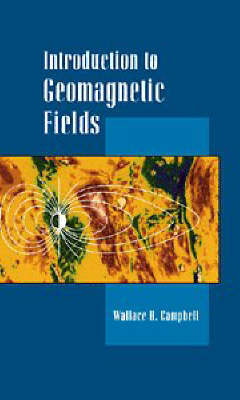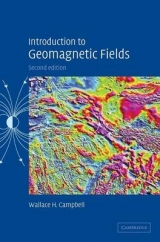
Introduction to Geomagnetic Fields
Seiten
1997
Cambridge University Press (Verlag)
978-0-521-57193-7 (ISBN)
Cambridge University Press (Verlag)
978-0-521-57193-7 (ISBN)
- Titel erscheint in neuer Auflage
- Artikel merken
Zu diesem Artikel existiert eine Nachauflage
Using a minimum of mathematics, and without sacrificing the depth of coverage, the author clearly presents the geomagnetic source fields. With its refreshing presentation, this book will appeal to graduate students and researchers.
Geomagnetic fields arise from a variety of electric current sources. The main, dipolar field results from currents in the Earth's outer core. Dynamo currents, driven by motion of the Earth's ionosphere, generate daily surface field variations, and the Sun's activity modifies the Earth's magnetosphere, producing storm currents on a global scale. Using a minimum of mathematics, and without sacrificing the depth of coverage, the author presents the geomagnetic source fields. Details of measurement methods and a thorough review of the societal impact and use of geomagnetic fields complete the main text. The book concludes with appendices that summarise the necessary background mathematics, provide a comprehensive list of geomagnetic information, and detail geomagnetic utility computer programs. With its refreshing presentation, Introduction to Geomagnetic Fields will appeal to graduate students and researchers seeking an understanding of these natural phenomena.
Geomagnetic fields arise from a variety of electric current sources. The main, dipolar field results from currents in the Earth's outer core. Dynamo currents, driven by motion of the Earth's ionosphere, generate daily surface field variations, and the Sun's activity modifies the Earth's magnetosphere, producing storm currents on a global scale. Using a minimum of mathematics, and without sacrificing the depth of coverage, the author presents the geomagnetic source fields. Details of measurement methods and a thorough review of the societal impact and use of geomagnetic fields complete the main text. The book concludes with appendices that summarise the necessary background mathematics, provide a comprehensive list of geomagnetic information, and detail geomagnetic utility computer programs. With its refreshing presentation, Introduction to Geomagnetic Fields will appeal to graduate students and researchers seeking an understanding of these natural phenomena.
Preface; 1. The Earth's main field; 2. Field variations at quiet times; 3. Solar-terrestrial activity; 4. Measurement methods; 5. Applications; Appendix A. Mathematical topics; Appendix B. Geomagnetic organizations, services, and bibliography; Appendix C. Utility programs for geomagnetic fields; References; Index.
| Erscheint lt. Verlag | 13.6.1997 |
|---|---|
| Zusatzinfo | 1 Tables, unspecified; 11 Halftones, unspecified; 171 Line drawings, unspecified |
| Verlagsort | Cambridge |
| Sprache | englisch |
| Maße | 158 x 237 mm |
| Gewicht | 570 g |
| Themenwelt | Naturwissenschaften ► Geowissenschaften ► Geophysik |
| Naturwissenschaften ► Physik / Astronomie ► Elektrodynamik | |
| ISBN-10 | 0-521-57193-6 / 0521571936 |
| ISBN-13 | 978-0-521-57193-7 / 9780521571937 |
| Zustand | Neuware |
| Haben Sie eine Frage zum Produkt? |
Mehr entdecken
aus dem Bereich
aus dem Bereich
How Numerical Models Revealed the Secrets of Climate Change
Buch | Hardcover (2020)
Princeton University Press (Verlag)
CHF 59,95



